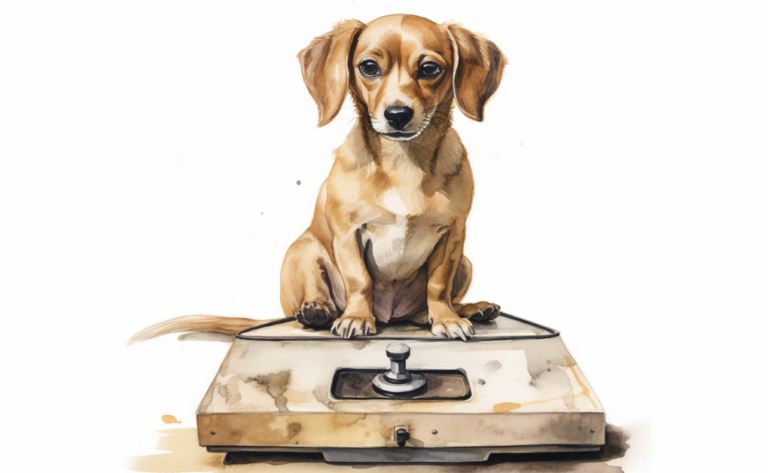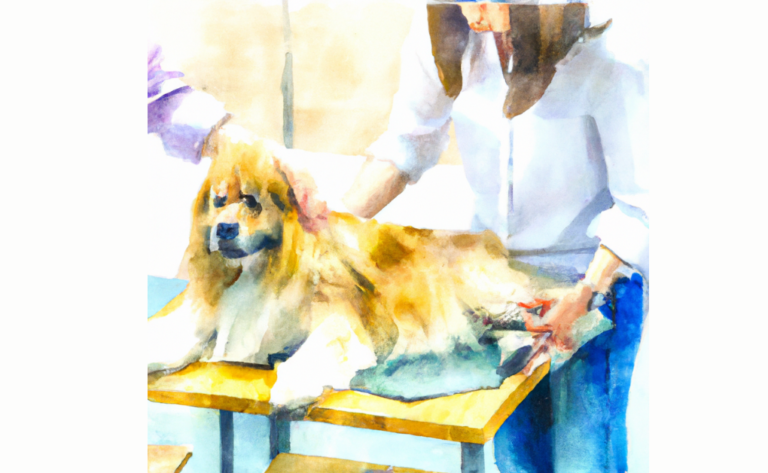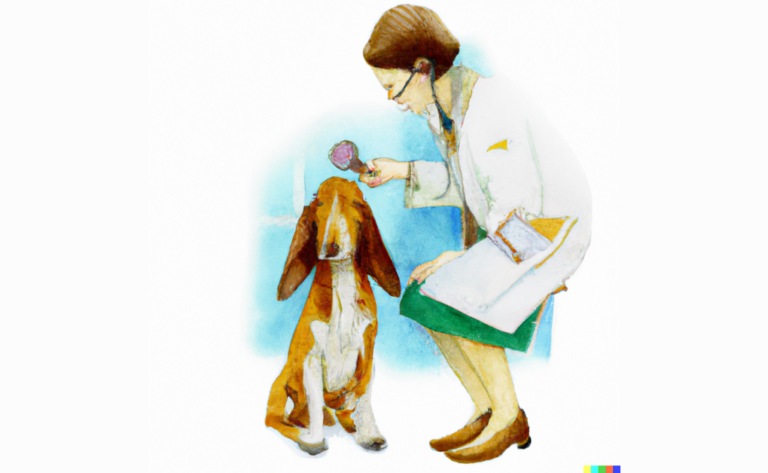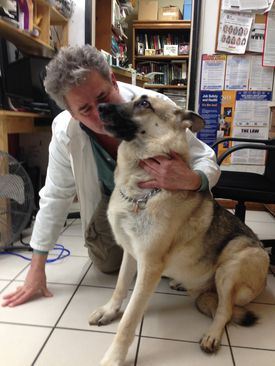Is Cancer Preventable in Dogs?
Introduction
When Max, a six-year-old Labrador Retriever, was diagnosed with cancer, his owner, Sarah, was devastated. Sarah couldn’t help but wonder if there was anything she could have done differently to prevent her beloved companion from facing such a heartbreaking ordeal. As she researched and consulted with veterinary experts, she discovered a wealth of information on the topic of cancer prevention in dogs.
Cancer is one of the most common diseases affecting both animals and people. It is the second leading cause of death among dogs and cats. Although dog cancer isn’t always fatal, it does cause pain and suffering. And while there are treatments available, prevention is critical.
While there are some things you can do to reduce the chances of getting cancer yourself, there is no way to eliminate the disease. However, there are ways to minimize the risks associated with having pets.
Dogs over ten years old should be screened for cancer every six months with a complete blood count (CBC) test. You must be aware of your dog’s common cancer symptoms to catch them early. If you notice any changes in your pet’s behavior or appearance, it is time to take him to a veterinarian for an examination.
Help keep your dog healthy. Give him regular exercise, make sure he gets enough sleep, feed him nutritious food, and provide plenty of love and affection. But you can also take some steps to help reduce his risk of developing cancer.
The American Veterinary Medical Association recommends that owners perform routine examinations on their pets every six months. This includes checking their skin, eyes, ears, mouth, teeth, nose, throat, abdomen, genitals, paws, nails, tail, and coat. Call your vet immediately if you notice anything unusual, such as lumps or bumps.
You can also talk to your veterinarian about spotting signs of cancer early. For example, if your dog develops a cough or sneezes frequently, she might be experiencing respiratory issues. On the other hand, a change in her appetite could mean something else is wrong.
If you find a lump or bump on your pet, don’t panic. Contact your vet immediately. He’ll examine your dog and determine whether further tests are needed. While there are no guarantees against cancer, you can do things to lower your dog’s chances of getting it.
Why Has There Been an Increase in Cancer Rates in Dogs?

Cancer is one of the leading causes of death among pets. It’s the number one cause of death for dogs over ten years old. And according to the American Veterinary Medical Association, the average lifespan of a dog today is 12 years, up from 9 years just 20 years ago. This longevity means that many dogs live long enough to develop some form of cancer.
Many factors contribute to the development of cancer. Some of them are genetic, meaning they run in families. Others are environmental, meaning external influences trigger them. Still, others are lifestyle choices, such as diet and exercise.
Some of these factors are unavoidable, while others are controllable. We can help reduce our pet’s risk by making healthy lifestyle choices, including eating nutritious foods, exercising regularly, and getting regular veterinary exams.
Avoid Keeping Your Dog Indoors More Often
There are several reasons why cancer is becoming increasingly common in dogs. One reason is that people choose to keep their dogs indoors more often. According to the American Veterinary Medical Foundation, indoor dogs have a much greater chance of contracting certain cancers than outdoor dogs.
Another factor is that we spend less time outside playing with our dogs. Instead, we allow our dogs to get some fresh air and exercise when we play fetch, toss a ball, or go for walks. This helps them stay fit and healthy.
Indoor dogs also tend to eat more processed foods, which may increase their risk of developing cancer. The same goes for diets high in fats and sugars. These ingredients aren’t good for your dog’s health, either. They can lead to obesity, diabetes, heart problems, and other diseases.
Try to Limit Your Pet’s Exposure to Chemicals
Chemical exposure has been linked to human cancer, but it’s unclear whether this applies to animals. However, recent studies suggest that chemicals in household products and consumer goods may threaten canine health.
The most commonly used chemical in household cleaners is triclosan. It’s added to antibacterial soaps, shampoos, and toothpaste to prevent bacteria growth. But research suggests that triclosan may interfere with how cells communicate with each other, potentially increasing the risk of cancer.
Other chemicals found in household items include bisphenol A (BPA), parabens, phthalates, and perfluorinated compounds (PFCs). BPA makes plastic containers and liners for food and drink cans. Parabens are preservatives that are widely used in cosmetics and personal care products. Phthalates are used to soften plastics and polyvinyl chloride (PVC) pipes. Finally, PFCs are used to make nonstick cookware and stain-resistant fabrics.
Cancer can occur when cells mutate and become abnormal. This mutation may be caused by environmental factors such as radiation exposure or chemical toxins. It may also be inherited from parents who carry genetic mutations that increase their chances of getting cancer.
While there isn’t conclusive evidence linking these chemicals to cancer, you should be aware of the potential risks associated with using them. If you use these products, try limiting your pet’s exposure to them. You can do this by washing dishes and utensils separately from your pet, storing cleaning supplies out of reach, and keeping your pets away from areas where these substances might accumulate.
Obesity Can Cause Cancer in Dogs
Another factor is that owners feed their dogs foods high in fat and sugar. These diets can lead to obesity, which puts dogs at risk for diabetes and heart disease. Obesity can also contribute to cancer because it leads to inflammation throughout the body.
Suppose you feed your dog a carbohydrate diet, such as bread, pasta, potatoes, rice, cereal, and sugary treats. In that case, you’re putting him at risk for pancreatitis, a condition characterized by pancreas inflammation.
Pancreatitis can cause damage to the organ and result in pain, nausea, vomiting, diarrhea, and loss of appetite.
In addition, if you feed your dog a lot of meat, he’ll have higher cholesterol levels in his blood. High cholesterol levels can lead to atherosclerosis, a buildup of plaque on artery walls that restricts blood flow and increases the risk of stroke and heart attack.

You can help keep your dog lean by choosing low-fat, lower-calorie foods like canned pumpkin, chicken breast, salmon, tuna, egg whites, and turkey. Likewise, avoid fatty meats like beef, pork, lamb, and sausage. Instead, choose poultry or fish.
You can also reduce your dog’s intake of table scraps. This will help him maintain a healthy weight and avoid overeating.
Reduce Your Dog’s Sedentary Lifestyle to Prevent Cancer
Another significant contributing factor to cancer in pets is the lack of exercise. A sedentary lifestyle can lead to weight gain, which can stress joints and organs. In addition, when you add in the effects of aging, it becomes even more challenging for dogs to maintain good health and keep their minds sharp..
The bottom line is that we need to take better care of our dogs. If we want healthy dogs, we must also ensure they get plenty of exercises and eat nutritious food. We also need to make sure that they don’t become overweight.
Breeder Selection and Spay-Neuter
Spaying and neutering your dog can help to prevent specific cancer from developing. For example, spayed or neutered dogs have a lower risk of developing mammary tumors (breast cancer), prostate tumors (prostate cancer), and testicular tumors (testicular cancer). In addition, neutering reduces your pet’s chance of developing other cancers such as skin, lymphoma, leukemia, and thyroid tumors.
There are several reasons why spaying/neutering your pet is essential. First, it prevents unwanted pregnancies. Second, it decreases the chance of your pet developing medical conditions such as diabetes, heart disease, arthritis, urinary tract infections, and skin allergies. Third, it keeps your pet healthy. Fourth, it allows you to keep your pet longer. Fifth, it makes it easier to find homes for your pet. Sixth, it increases the likelihood that your pet will live a long, happy life.
While spaying and neutering your pet is recommended, there are still situations where it is best to wait. For example, if your pet is pregnant, spaying her might put her health at risk. If your pet is too young to be spayed/neutered, she may become aggressive toward other dogs. And if your pet is already sick, spaying/neutering her might worsen her condition.
If you decide to spay/neuter your pet, there are a few options. You can take him to a veterinary clinic, a shelter, or even your local animal control office. Most covers offer free spays and neuters. Many clinics charge around $100-$150. Your vet may charge anywhere from $50-$200.
The decision about what route to take is up to you. But whatever you choose, remember that early spay/neuter is better than late spay/neuter.
Nutrition Tips To Help Prevent Cancer in Dogs
Obesity increases the risk of many types of cancer in dogs. There is evidence that antioxidants like eicosapentaenoic acid (EPA) and docosahexaenoic acid (DHA), and medium-chain triglycerides (MCTs), may help prevent cancer in your pet. Older dogs are more likely than younger dogs to develop cancer. Older dogs tend to have lower levels of cancer risk than young adult dogs. Antioxidant supplementation isn’t recommended for puppies more youthful than 12 months old because there needs to be more data about how it affects growth and development.
Here are some other things you can do to keep your furry friend healthy:
- Avoid feeding commercial dog foods containing corn, wheat, soybeans, and other grains. These ingredients may contain carcinogens that contribute to cancer development.
- Limit intake of red meat. Red meats contain large amounts of saturated fat, which increases cholesterol levels and contributes to heart disease.
- Reduce consumption of processed meats. Processed meats contain nitrates and nitrites, which are known carcinogens.
Frequently Asked Questions
Disclaimer: The information provided on this veterinary website is intended for general educational purposes only and should not be considered as a substitute for professional veterinary advice, diagnosis, or treatment. Always consult a licensed veterinarian for any concerns or questions regarding the health and well-being of your pet. This website does not claim to cover every possible situation or provide exhaustive knowledge on the subjects presented. The owners and contributors of this website are not responsible for any harm or loss that may result from the use or misuse of the information provided herein.







